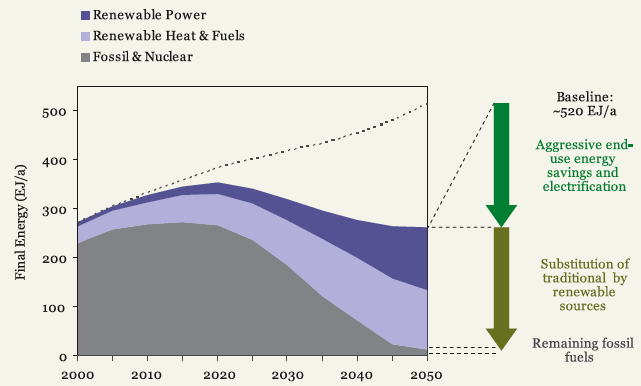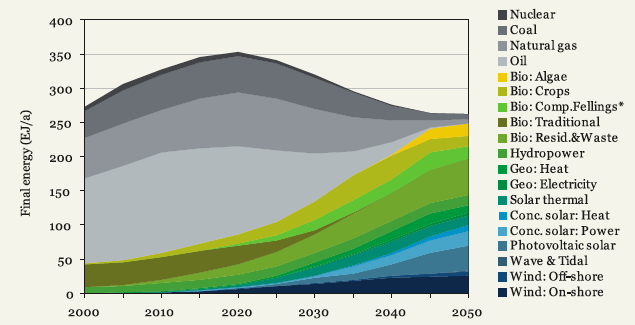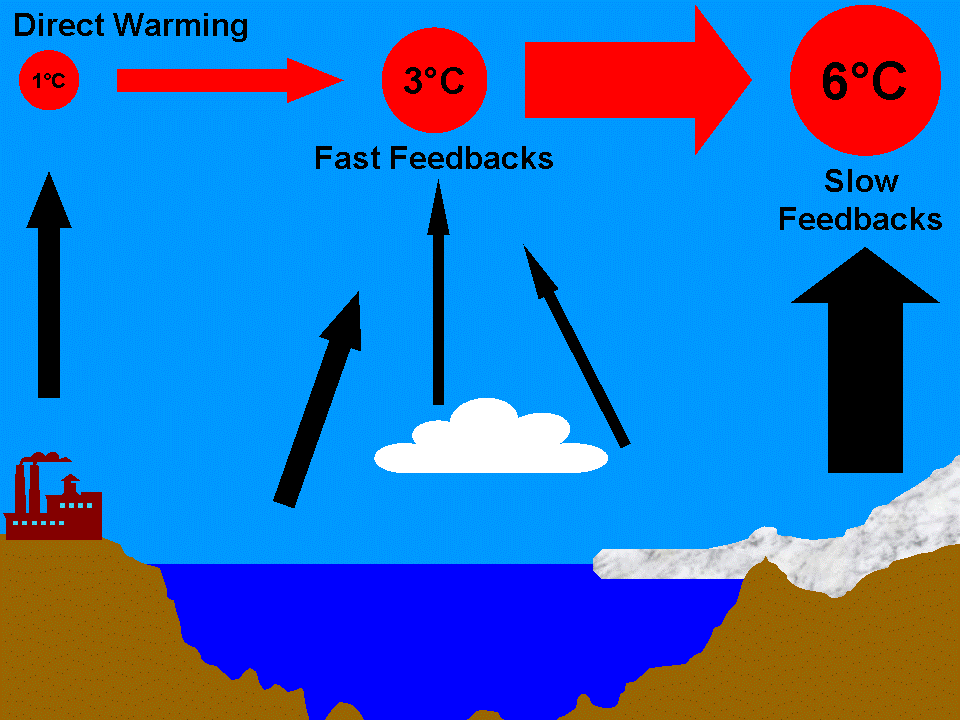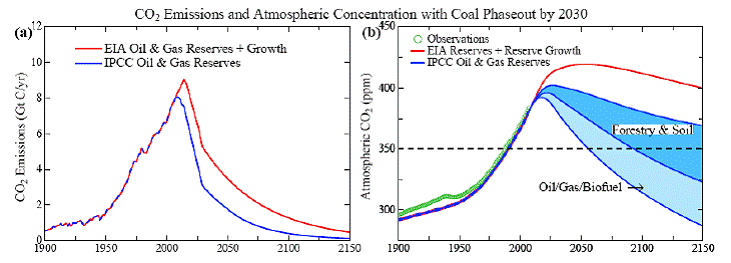As the physical understanding of climate change within the scientific community has become more and more robust, paradoxically the public debate has become progressively more disconnected from the scientific literature.
It’s unsurprising, then, that Hans Schellnhuber, climate advisor to the German government and himself a natural scientist, recently argued that 90% of all research on global change ought to be conducted by social scientists. Indeed, it requires social science to understand this growing disconnect between scientific reality and public perception.
Many factors can be cited to explain this disconnect: Among them are the media’s misplaced attempts to “balance” scientific knowledge with the mere words of contrarian bloggers and political operatives, and the well-documented efforts by vested interests and political groups to sow doubts about climate science.
But in addition to such political or sociological factors, climate change also challenges our basic cognitive abilities.
In particular, people have considerable difficulty understanding the notion of accumulation, and how changes to one variable affect the accumulation of another.
Understanding emissions
To illustrate, consider first the relationship between total atmospheric CO2 (currently around 390 ppm) and global temperatures.
Atmospheric CO2 and global temperatures are coupled, such that any increase in CO2 will lead to further temperature rises in the long run. Stabilization of atmospheric CO2 is therefore a precondition for limiting warming.
But what about the relationship between annual CO2 emissions and atmospheric CO2 concentrations?
If we want to stabilize CO2 in order to stabilize the climate, how much do we have to reduce annual emissions?
In an elegant series of studies, MIT’s John Sterman has shown that even highly-educated people, such as engineering graduates, are unlikely to answer this question correctly without further specialized training (e.g., Sterman & Sweeney, 2007).
When shown the trajectory of annual CO2 emissions, which to date has exhibited an ever-accelerating increase, the majority of people will propose that stabilization of emissions, or a slight decrease, will be sufficient to stabilize atmospheric CO2.
This is completely and inescapably false.
Filling the global bathtub
In actual fact, to stabilize atmospheric CO2, emissions must be cut drastically, and the longer action is delayed, the more steeply emissions must be cut.
This is because CO2 accumulates in the atmosphere in the same way as the water level in a bathtub rises while the tap is on. Absent any leakage, the only way to stabilize the water level is to shut off the tap completely.
Similarly, we must eventually reduce emissions to zero if we wish CO2 levels to stabilise and then, by natural absorption, to ever so gradually reduce over time.
In a recent radio interview, Professor Tim Flannery (the chief of Australia’s national Climate Change Commission) mentioned the fact that a reduction in global temperatures will take hundreds of years to materialize even if CO2 emissions were to cease completely and instantly.
In a rapid-fire display of ignorance, several national media figures and politicians, including the leader of the Federal opposition, mistook this statement to imply that cutting emissions was a useless and unnecessary endeavour. Of course it isn’t.
Quite to the contrary, before we can even think about a reduction in temperatures we must cut emissions to prevent a further, potentially devastating rise in global temperatures.
The data by Sterman and colleagues show that people have difficulty with these essential physical relationships.
Because this cognitive limitation has until now translated into policy inaction, the climate problem gets bigger every day.
Any further delay of action translates into the need for ever-greater emission cuts: the fuller the bathtub, the more rapidly the tap must be shut to avoid an overflow.
The figure below, taken from Allison et al. (2009), illustrates this problem and compares the global emissions paths required to have any chance to limit warming to 2C, depending on when they peak. The longer we wait, the harsher the cuts.

Where we go wrong
Why do people have difficulty understanding the notion of accumulation, despite it being readily explainable with the bathtub analogy?
People often process information about dynamic variables on the presumption that the output of a complex system “looks like” the input.
So, if emissions are reduced, atmospheric CO2 levels are correspondingly assumed to fall, when in fact they continue to increase, albeit at a reduced rate.
And this cognitive strategy bites us a second time; namely, when it comes to mitigation efforts. One plausible reason that fear campaigns arguing emission cuts will decrease our wealth have gained traction is that in the past, wealth accumulation has paralleled the increase of CO2 emissions.
By again applying the strategy that variables in a complex system “look alike”, people can easily be convinced that reducing emissions will also reduce wealth.
This presumption is as false as the presumption that cutting emissions will reduce atmospheric CO2.
According to most economic modelling, cutting emissions will not cut wealth. Emission cuts will not even abolish economic growth; they will merely slow the rate at which our society accumulates wealth.
According to the Australian Treasury, cutting emissions by 90% by 2050 would still see per capita GNP rise from the current $50,000 to around $80,000.
In light of this clear path forward towards increasing wealth in a safe climate, the current state of public debate in Australia and other western countries is indeed sadly misguided.
(A variant of this article first appeared on The Conversation on 5 April 2011. It has been modified and updated slightly for posting here)
References
Allison, I.; Bindoff, N. L.; Bindschadler, R. A.; Cox, P. M.; de Noblet, N.; England, M. H.; Francis, J. E.; Gruber, N.; Haywood, A. M.; Karoly, D. J.; Kaser, G.; Le Quéré, C.; Lenton, T. M.; Mann, M. E.; McNeil, B. I.; Pitman, A. J.; Rahmstorf, S.; Rignot, E.; Schellnhuber, H. J.; Schneider, S. H.; Sherwood, S. C.; Somerville, R. C. J.; Steffen, K.; Steig, E. J.; Visbeck, M. & Weaver, A. J. (2009).
The Copenhagen Diagnosis 2009: Updating the World on the Latest Climate Science. Technical Report, University of New South Wales.
Sterman, J. D. & Sweeney, L. B. (2007). Understanding public complacency about climate change: adults’ mental models of climate change violate conservation of matter. Climatic Change, 80, 213-238.
As our physical understanding of climate change has become more and more robust, public debate has become progressively more disconnected from the scientific literature.
It’s unsurprising, then, that Hans Schellnhuber, chief climate advisor to the German government and himself a natural scientist, recently argued that 90% of all research on global change ought to be conducted by social scientists.
As ANU’s Professor Will Steffen recently noted, what passes for public debate in contemporary Australia has deteriorated into a nearly “infantile” discussion about some fundamental physical facts.
Many factors can be cited to explain this disconnect between scientific reality and public perception.
Among them are the media’s misplaced attempts to “balance” scientific knowledge with the mere words of contrarian bloggers and political operatives, and the well-documented efforts by vested interests and political groups to sow doubts about climate science.
But in addition to such political or sociological factors, climate change also challenges our basic cognitive abilities.
In particular, people have considerable difficulty understanding the notion of accumulation, and how changes to one variable affect the accumulation of another.
Understanding emissions
To illustrate, consider first the relationship between atmospheric CO2 (currently around 390 ppm) and global temperatures.
Atmospheric CO2 and global temperatures are couple, such that any increase in CO2 will lead to further temperature rises in the long run. Stabilization of atmospheric CO2 is a precondition for limiting warming.
But what about the relationship between annual CO2 emissions and atmospheric CO2 concentrations?
If we want to stabilize CO2 in order to stabilize the climate, how much do we have to reduce annual emissions?
In an elegant series of studies, MIT’s John Sterman has shown that even highly-educated people, such as engineering graduates, are unlikely to answer this question correctly without further specialized training.
When shown the trajectory of annual CO2 emissions, which to date has exhibited an ever-accelerating increase, the majority of people will propose that stabilization of emissions, or a slight decrease, will be sufficient to stabilize atmospheric CO2.
This is completely and inescapably false.
Filling the global bathtub
In actual fact, to stabilize atmospheric CO2, emissions must be cut drastically, and the longer action is delayed, the more steeply emissions must be cut.
This is because CO2 accumulates in the atmosphere in the same way as the water level in a bathtub rises while the tap is on. Absent any leakage, the only way to stabilize the water level is to shut off the tap completely.
Similarly, we must eventually reduce emissions to zero if we wish CO2 levels to stabilise and then, by natural absorption, to ever so gradually reduce over time.
In a recent radio interview, Professor Tim Flannery mentioned the fact that a reduction in global temperatures will take hundreds of years to materialize even if CO2 emissions were to cease completely and instantly.
Puzzlingly eager to display their ignorance, several media figures and politicians, including the leader of the opposition, mistook this statement to imply that cutting emissions was a useless and unnecessary endeavour.
Quite to the contrary, before we can even think about a reduction in temperatures we must cut emissions to prevent a further, potentially devastating rise in global temperatures.
The data by Sterman and colleagues, uncannily given a public display by Mr Abbott, show that people have difficulty with these essential physical relationships.
Because this cognitive limitation has until now translated into policy inaction, the climate problem gets bigger every day.
Any further delay of action translates into the need for ever-greater emission cuts: the fuller the bathtub, the more rapidly the tap must be shut to avoid an overflow.
The figure below illustrates this problem and compares the global emissions paths required to have any chance to limit warming to 2C, depending on when they peak. The longer we wait, the harsher the cuts.
The later the peak in emissions is reached, the steeper their subsequent reduction has to be.
Where we go wrong
Why do people have difficulty understanding the notion of accumulation, despite it being readily explainable with the bathtub analogy?
People often process information about dynamic variables on the presumption that the output of a complex system “looks like” the input.
So, if emissions are reduced, atmospheric CO2 levels are correspondingly assumed to fall, when in fact they continue to increase, albeit at a reduced rate.
And this cognitive strategy bites us a second time; namely, when it comes to mitigation efforts. One plausible reason that fear campaigns arguing emission cuts will decrease our wealth have gained traction is that in the past, wealth accumulation has paralleled the increase of CO2 emissions.
By again applying the strategy that variables in a complex system “look alike”, people can easily be convinced that reducing emissions will also reduce wealth.
This presumption is as false as the presumption that cutting emissions will reduce atmospheric CO2.
According to most economic modelling, cutting emissions will not cut wealth. Emission cuts will not even abolish economic growth; they will merely slow the rate at which our society accumulates wealth.
According to our Treasury, cutting emissions by 90% by 2050 would still see per capita GNP rise from the current $50,000 to around $80,000.
In light of this clear path forward towards increasing wealth in a safe climate, the current state of public debate is sadly infantile indeed.








